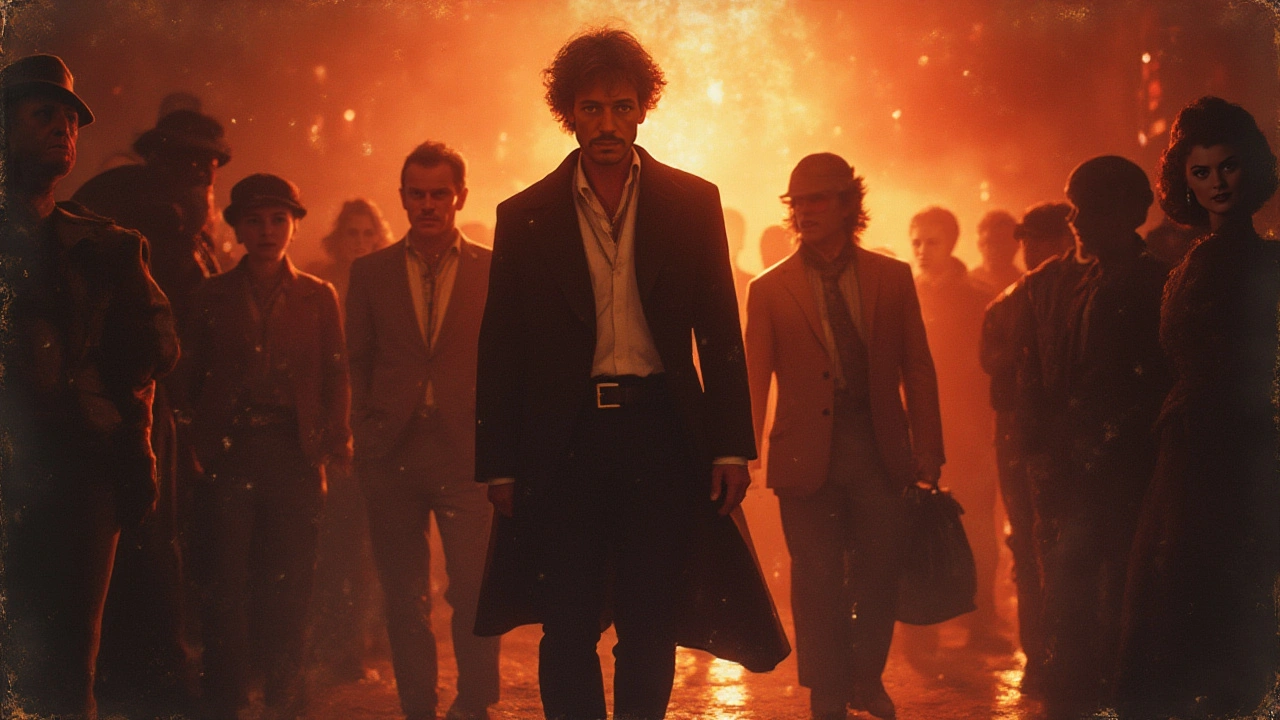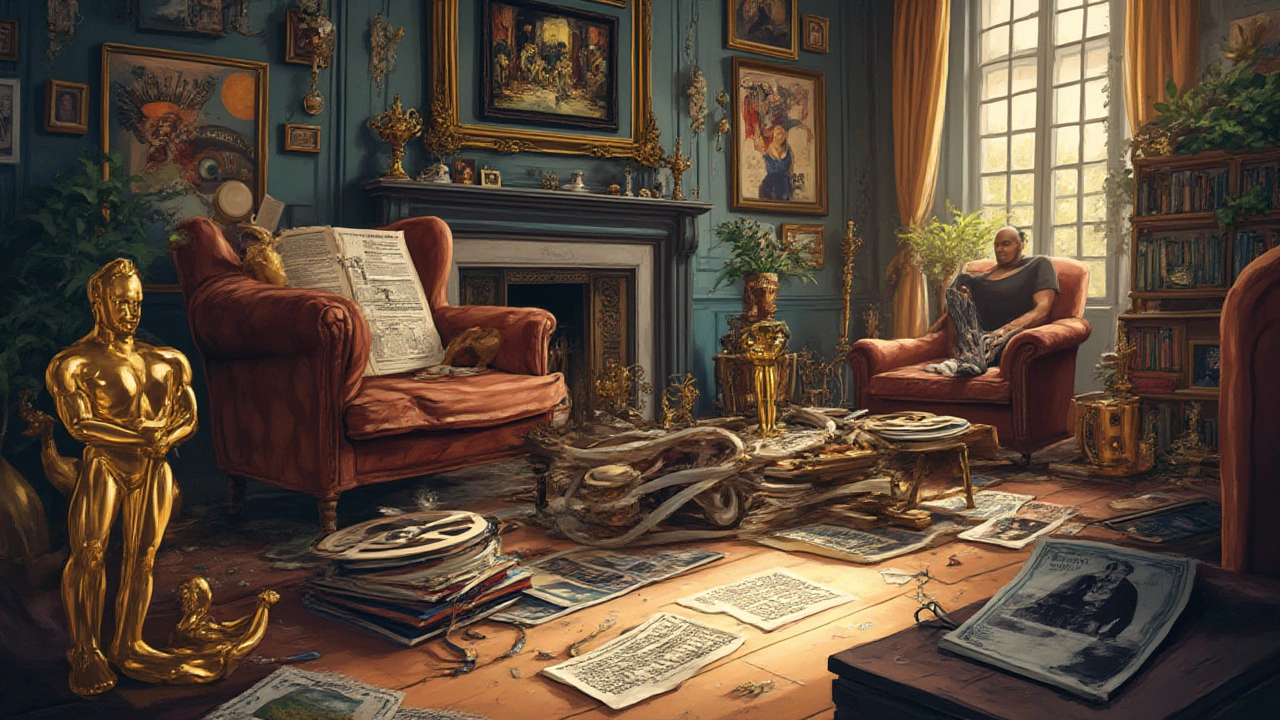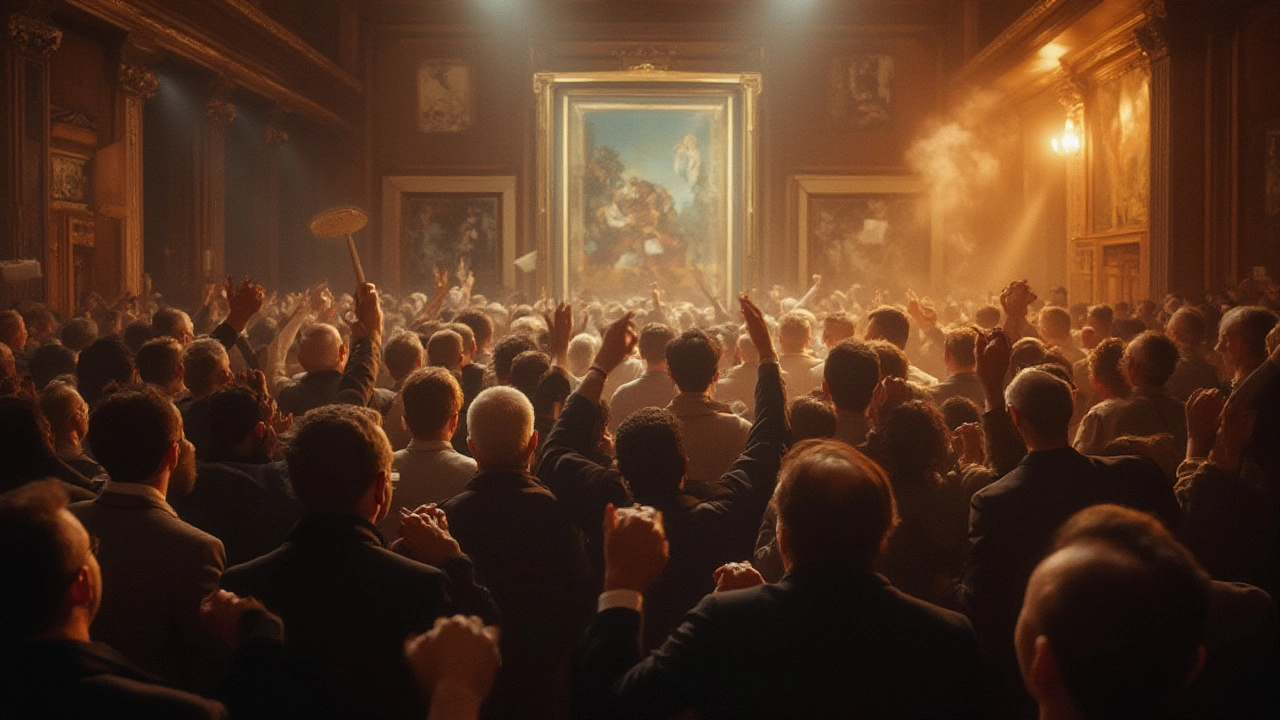Not all movie posters are created equal. Some are just scraps of old paper in dusty theaters. But others? They’re worth more than a sports car, a college education—sometimes, even more than most homes on your average street. Welcome to the high-stakes world of rare movie posters, where collectors think nothing of dropping more on a single print than you’d pay for a shiny new Tesla.
The Metropolis Poster: Breaking All Records
Everyone talks about blockbuster budgets or actors’ salaries, but the tale of the most expensive movie poster ever sold is a different kind of Hollywood legend. The crown goes to Fritz Lang’s 1927 silent science fiction masterpiece, Metropolis. But fans aren’t flocking to theaters—this hype is all about one poster, created by German graphic designer Heinz Schulz-Neudamm. Only four known original copies of this poster exist, and its design remains as striking and futuristic as anything Hollywood has churned out since. The bold, angular fonts and golden tones almost make it glow with promise from a lost future.
Back in 2005, it fetched $690,000 at auction—no small sum for a slice of linen-backed, hand-illustrated pulp. That was nothing compared to what happened next. In 2012, this legendary Metropolis poster hit the block again, and the price sailed to a staggering $1.2 million, purchased by collector and financer Ralph DeLuca. Until now, that remains the highest price ever paid for a movie poster anywhere in the world—nearly double the price of the competition. You could own a penthouse in some cities for that. Or you could hang a piece of science fiction history on your wall and never worry about sun-fading it.
What makes this poster so special? Picture the context: Metropolis wasn’t just a movie, it shaped science fiction on screen forever. It inspired everything from Blade Runner to Star Wars. Plus, because of the limited number of originals printed and even fewer surviving the chaos of the 20th century’s wars and neglect, this poster’s scarcity is real—not manufactured, not hyped up on eBay. If you see this image hanging in someone’s home, you’re looking at more than a collectible; you’re staring at the Mona Lisa of movie posters.
| Poster | Sale Price (USD) | Year Sold | Buyer |
|---|---|---|---|
| Metropolis (1927) | $1,200,000 | 2012 | Ralph DeLuca |
| Dracula (1931) | $525,800 | 2017 | Undisclosed |
| The Mummy (1932) | $435,500 | 1997 | Undisclosed |
The wild part? Posters like this one often weren’t meant to last. They’d be tacked over, painted on, or ripped down after a film’s short theatrical run. There were no portfolios, no acid-free sleeves. To own an original, pristine copy is like finding a first-edition Superman comic that’s never once seen a grimy kid’s hands.

Why Movie Posters Fetch Small Fortunes
So, what sets one movie poster apart from the rest? It’s a puzzle with a few pieces—history, rarity, and a big dose of nostalgia. Movie posters started out as functional, disposable marketing material. Before streaming consumed us all, getting the newspaper ad or seeing the posters slapped on city walls was how you learned what to see on a Friday night.
But as movies became art, the posters became icons in their own right. Classic hand-drawn posters from the ‘20s to the ‘50s—the so-called Golden Age of Poster Art—are often more valued because each was a unique creation, not just a Photoshop template with a logo. Movie studios paid top artists to lure crowds, and their work stands up next to any gallery painting.
Scarcity adds rocket fuel to a poster’s value. The Metropolis poster is just the most extreme example. Lost films, like 1927’s notorious London After Midnight, might have no survivors at all, making even a battered lobby card a precious find. But there are also stories like the Dracula (1931) poster, which broke half a million dollars at a Heritage Auctions sale in 2017. That’s not just because Dracula is a horror king; most copies were thrown away, and only a handful survived. Rarity is everything—your mass-printed Marvel poster isn’t going to fund your retirement.
There’s another twist: condition. Serious collectors will pay triple for a “mint” copy, free from pinholes, tape, or sun bleaching. Restoration is common, but sometimes visible repairs tank the price. And yes, provenance (the poster’s documented ownership history) can make or break an auction. Bought from a famous collector or a cinema manager who worked the film’s original run? That poster’s price tag just shot up.
If you’re thinking this is just for Hollywood millionaires, think again. The movie-poster collecting world is a wild mix. Some big price hikers are private collectors who saw posters as undervalued art before it became a trend. Others are museums or film institutions wanting to preserve cinematic history. Even people who grew up obsessed with a specific movie—like my cousin, who probably would have sold our family dog Shadow to own a vintage Star Wars poster (don’t worry, Shadow is safe)—can become accidental rivals at an auction.
Want a taste of this high-rolling world? Here’s an everyday tip: hunt down posters from cult classics or flops that might skyrocket years later. The original Star Wars and Jaws posters were basically everywhere in the ‘70s. Today, uncirculated ones from that run, especially in mint condition, fetch steady four-figure prices. If you find something rare at a garage sale, hang on to it!

Expert Tips for Investing in Movie Posters
Dipping your toes into poster collecting? It’s a rabbit hole, in the best sense. Here’s how to boost your odds of scoring something special, or maybe even cashing in big one day.
- Research the market: Sites like Heritage Auctions, Bonhams, and eBay’s fine collectibles section host real-time sales. Study what sales results seem strong and spot trends—horror always does well, and sci-fi is right up there.
- Rarity rules. Don’t be fooled by reproductions. Originals are usually on thinner paper, and feel more fragile. If you spot a silk-screened or re-issued poster (commonly from the 1980s or later), that’s generally not your golden ticket.
- Look for provenance—any proven history helps. Bonus points if you can document the poster’s life, especially if it’s been handled by legendary collectors or appeared in exhibitions.
- Condition is everything. Inspect for restoration, touch-ups, or acid burns (common with old cellulose-based paper). Mint, linen-backed, or unfolded copies always fetch more at auction. Avoid amateur repairs like household tape—it’s a collector’s nightmare.
- Seek out niche genres or lesser-known works from major directors. Early Italian horror, French New Wave, or 1950s monster flick art can leap in value if trends shift.
- Frame it right! UV-blocking glass and acid-free mats are your best friends. Never hang rare posters where sunlight will find them, and avoid humid spots (basements are the enemy of your investment).
- Find a trusted dealer. If you aren’t buying directly from a big auction house, make sure your seller has a rock-solid reputation. Scams in this world are real and sometimes expensive lessons.
- Timing matters. Don’t jump at the first offer. Collector fever can make prices spike or crash. If there’s a new adaptation of a franchise (think: a fresh Batman or Bond), original posters often shoot up as buzz builds.
Want a snapshot of how much this market has shifted? The average price for a top-tier antique poster has doubled every decade since the late 1980s. In the ‘90s, you might have paid a few thousand dollars for a mint Casablanca one-sheet. Today, try six figures. The rarest posters—like Metropolis—now feel more like blue-chip stocks than bedroom decor.
You don’t need to be a millionaire to get started. Even more modern posters from under-the-radar cult films can see surprising jumps. My friend once bought a pristine Brazilian release poster for City of God for less than $50; today, it’s worth more than $1,000. Spotting early trends, knowing your market, and protecting what you own can make collecting just as much fun as a red-carpet premiere—and sometimes, just as lucrative.
If you love movies, this hobby gives you the chance to own a slice of the magic. Hang an original poster from your favorite era, and suddenly, the next million-dollar find might not feel as far off as you think.



Comments
Wow, seriously? The most expensive movie poster ever? I bet it's some classic like Casablanca or Star Wars, right? I mean, who even spends that kind of cash on a piece of paper these days? It's just insane how collectors go absolutely bonkers over film memorabilia like this. Kinda makes me wonder if I should start hoarding old movie posters instead of stocks or crypto or whatever.
Also, what makes this particular print so special? Is it rare or signed, or is it just the hype? Because I'd love to understand why one poster can redefine auction history. Like, is it the artwork, the movie's legacy, or some weird combination of factors? Someone enlighten me!
I feel like there’s gotta be a good story behind how this print was saved and preserved that’s juicier than the price tag. Either way, the nostalgia factor must be off the charts for collectors to drop that kind of cash.
Oh wow, this is actually quite fascinating, I didn't realise posters could fetch such high amounts at auctions. It's interesting how film memorabilia holds such sentimental and financial value, even decades later.
I'm curious if these collectors tend to focus on a particular genre, era or director? Like, do old Hollywood classics usually get the most attention, or can something more modern be just as valuable if it's rare enough?
And does the condition of the poster play a huge role in the value? I imagine a pristine, well-preserved print is miles more valuable than one who's seen better days.
Also, anyone knows if there's a booming market for posters in the UK as well, or is it mostly an American collector's thing?
This topic really piques my curiosity because it blends art, history, and economics all in one. I mean, movie posters are symbolic artifacts, representing cultural milestones, right? So their value can extend far beyond just aesthetics or rarity.
It would be great to learn more about the specific poster in question – what movie it was for, and why it has such an esteemed place among collectors. I've also wondered if the provenance, like previous owners or exhibition history, significantly inflates the price.
And considering how popular home decor inspired by cinema is nowadays, I guess some buyers cherish these posters to physically hold a piece of film history.
Has anyone here been to auctions or tried collecting anything of similar nature?
Geez, all this fuss over a poster? That's just wild. But hey, I get it. There's something magical about film memorabilia that turns mere objects into treasures, especially if they've got a story.
I'd guess the poster probably had some emotional significance or was ultra-rare, maybe even the only copy in existence. A collector’s dream, right?
Plus, auctions tend to bring out the competitive side in people — that adrenaline rush when bidding itself can skyrocket prices beyond intrinsic value. Classic case of perceived worth trumping actual worth.
Anyone else reckon that posters like these should be displayed in museums instead of private collections? It’s a pity if they vanish behind velvet ropes just so a wealthy few have bragging rights.
Ok, I gotta admit, the whole "most expensive movie poster" thing sounds so dramatic but I can't help but be skeptical. I mean, what’s the real story here? Are we talking about millions exchanged or is it just some inflated auction hype?
Also, how often do these things come up for sale? Is it like once in a century or do collectors keep cycling these high-value posters among themselves?
I feel like there's a lot of smoke and mirrors in all these memorabilia markets. Prices get inflated just because some rich guy decides it’s worth it. Meanwhile, normal fans can't access this cultural history because it’s locked behind paywalls or vaults.
Am I just being cynical or does anybody else feel the same way?
Oh, the sheer ostentation of it all! To think that a mere poster—quite possibly an inconsequential byproduct of cinematic marketing—has achieved a record-setting valuation is nothing short of preposterous, yet undeniably fascinating.
The layers of cultural cachet and historic resonance wrapped up within a single print elevate it from banal memorabilia to a coveted artifact of profound significance. Yet, one must wonder if this fervent valuation truly reflects an artistic reverence or simply the commodification of nostalgia.
The theatrics of auction houses, the whispered tales of provenance, and the titillating mystery of provenance all conspire to create an event that redefines not only market parameters but our collective memory of cinema itself.
Truly, the narrative woven around this poster transforms it into a symbol of cultural elite indulgence and the capriciousness of value in fine arts collecting.
Seriously, who even spends THAT much on a poster? I get collecting but this feels beyond reason. Also something about this report had a few grammar errors—'memorabilia' was plural and should've been consistent throughout. Just nitpicking, sorry!
Anyway, does anyone else find it odd how these auction stories rarely mention the exact condition of the item? Like, a scratch or a crease can seriously reduce value but selling them as 'mint condition' makes buyers go insane. Transparency would help.
What about reproductions? Are these auction houses cracking down on fake posters or is it just a free-for-all?
Honestly, I just chill and watch these things go down. Some folks really dig owning something rare from movie history, it’s their vibe. I don’t get the hype but I get the passion behind it.
What’s cool is hearing the stories behind these posters—for some, it’s nostalgia for their childhood or the first movie that got them hooked. That kinda connection is priceless.
I wonder what the actual print looks like and if it’s just a regular poster or got some unique design or signature that sets it apart?
Oh for crying out loud, the drama around this overpriced glorified flyer is just ridiculous. People really throw their money at anything remotely shiny and associated with Hollywood these days.
I'd bet the poster's probably just a faded piece of paper behind glass and now it's worshipped like some sacred relic because a rich snob said so. I’m so over this obsession with putting ridiculous price tags on crap.
Plus, the whole ‘redefined auction history’ is just hype to rope in more suckers. Mark my words, these markets are just bubbles fueled by fanatical collectors.
Unless it’s signed by the entire cast or something else truly unique, it’s just a poster. Period.
I'm gonna go out on a limb here and say this whole 'most expensive movie poster' thing smells fishy. Like, how do we actually verify these prices? Could insiders be artificially inflating these figures to create fake demand or hype?
Auction houses have a lot to gain from such headlines, and collectors get swept up in the frenzy without questioning it. The media loves a good story—most expensive this, rarest that—but where's the transparency?
Also, is this poster even culturally significant enough to warrant such a price? Or is it just the result of manipulation by big money players who want to flex their status?
I wouldn’t be surprised if it’s all a marketing ploy wrapped in nostalgic fairy dust.